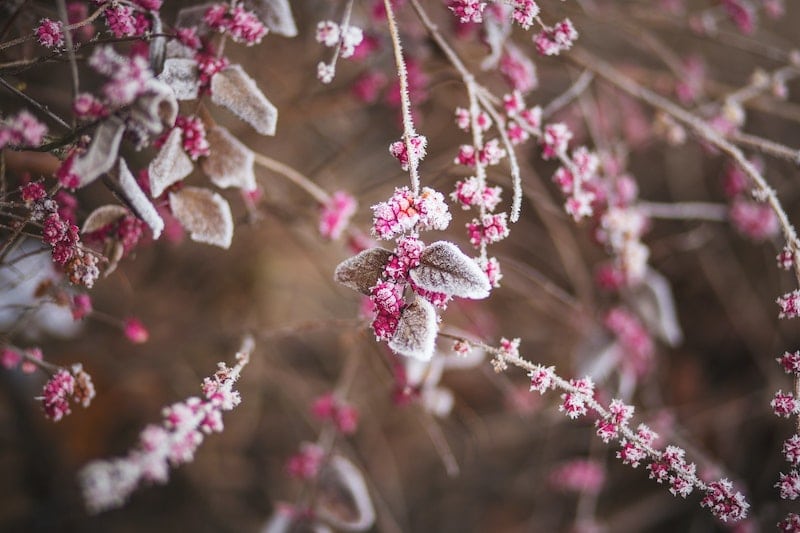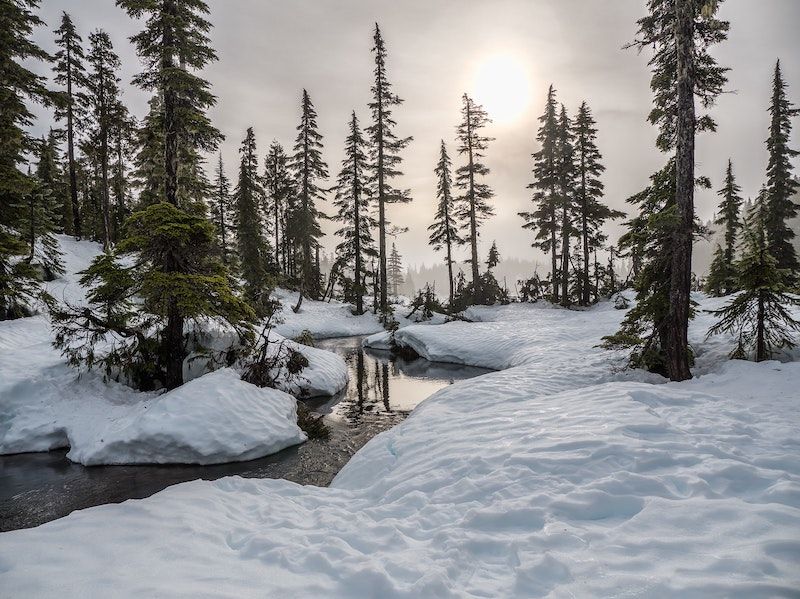One of my favorite songs this time of year is “In the Bleak Midwinter.” It’s based on a poem that Romantic poet Christina Rossetti wrote in 1872. Considering that Jesus was born in the Middle East and likely not in winter, I’ve always seen the first verse as a beautiful metaphor. Jesus came into our world when “earth stood hard as iron, water like a stone.” The imagery wouldn’t have the same effect if the poem was called “In the Joyous Midsummer.”
Christina Rossetti is not alone in using the starkness of winter for dramatic effect. In art and popular imagination, winter is frequently a metaphor for hardship. Stories about winter are often bittersweet or have the sting of hopelessness and grief. Think of Narnia under the spell of the White Witch, Edgar Allen Poe’s ominous setting for The Raven, or fairytales like The Snow Queen.
I’ve always lived in a place where winter brings darkness, snow, and painfully cold windchill. As I write this, my neighborhood is slick with ice and hidden under snowdrifts. Abandoned bird nests hang in the bare trees. Twilight begins at four in the afternoon.
On my daily walks, I notice things we’ve lost in this season: daylight, color, familiar animals. The herons have headed south, along with the red-winged blackbirds and the Monarch butterflies. The creatures that don’t migrate burrow into dens and fall asleep: squirrels, muskrats, the neighbors.
All this to say, I understand why winter inspires rumination on sobering themes like grief and mortality. For years, the onset of winter stirred up a sense of dread in me. That is, until a deeper understanding of the natural world made me reconsider. In nature, winter is not only a time of decay and loss. It’s a time of sleep and restoration. Our world wouldn’t be the same without it.
Sleep is necessary for our own survival. Besides the obvious energy boost, sleep plays an important role in our overall health, though most of its painstaking activity is invisible. The study of sleep has a surprisingly short history given people’s long-held fascination with it. Most of what we know about sleep has been discovered in the last sixty years.
The culmination of all this research has revealed that sleep is not a passive state, but an active one. And it turns out, our bodies and brains need more than raw energy, a burst of caffeine or sugar to keep us going, we need restoration. And restoration appears to be sleep’s overarching purpose.
Most of sleep’s processes are a means to this end as it works its magic on our brains, muscles, and organs. When we drift off to sleep each night, our body begins inner housekeeping, like a host cleaning up after party guests. Cell waste is rinsed away in our brains, quite literally clearing our minds. Short-term memories are collected and filed in long-term storage. Tissues, muscles, and joints are intricately repaired by the release of a growth hormone. Our heart and lungs get a break as everything within us slows down. Without sleep, none of this invisible inner maintenance could happen. It’s a process that caffeine can’t replicate.

Nature needs sleep and restoration too—and not just animals like us. Plants also sleep. The technical name is “dormancy,” but the word comes from the Latin dormire which means—not surprisingly—to sleep. Dormancy protects plants from winter’s harsher weather and diminished light. Deciduous trees shed their leaves—among other reasons—to become more aerodynamic and flexible in the face of winter’s wind, snow, and ice. Pine trees and other conifers fill their needles with a chemical that acts as antifreeze to guard against frigid temperatures.
Like sleep for us, dormancy gives trees and other plants a much-needed rest. The frenetic growth and activity of spring, summer, and fall is exhausting. It takes a lot of energy for plants to process nutrients, grow, reproduce, and defend themselves against pests and disease. Many trees like maples and oaks would eventually work themselves to death without winter’s merciful interruption.
Studies have shown that when a deciduous tree—like a sugar maple—is grown indoors with unvarying warmth and light, it will skip dormancy the first season but will die within a year or two. It needs winter. Even trees in warm climates experience annual rest. Palm trees experience dormancy too. Though their cycles of growth and rest are abbreviated, they’re nonetheless present.
This newfound knowledge changed my attitude towards winter. Instead of images of sadness and loss, the faded winter world reminds me that in nature there’s no such thing as constant growth and outward activity. There are rhythms and movements. Cycles and seasons. The visual cues of nature—the dormant trees, the subdued color, the stillness—remind me of my own need for restoration. In a way, the sleeping natural world gives me permission to rest and to accept there are good things happening below the surface that don’t need my help.

January will soon be here and along with it, the beginning of self-improvement season. But what if this January was different? What if instead of throwing ourselves into relentless self-improvement next month and trying to plant seeds in the frozen ground, we paused?
What if we delayed annual goal-setting and overhauled schedules and grand plans until February? What if January was our fallow month of the year, when we let the soil rest? I know it’s countercultural. There’s a lot of money to be made this time of year by convincing us if we just tried harder or set the right goals or bought an expensive planner, we could make 2021 our best year yet. But maybe after a year like 2020, what many of us need is to cut ourselves some slack. Maybe we need a nap instead of a plan.
I think the trees have something to teach us about rest that our culture can’t. And it’s a lesson worth considering as they shudder off the last of their leaves and settle in for their winter sleep.
This is my final post for The Art of Simple. Thank you, Tsh, for allowing me to be part of this community and for encouraging all of us to think and live more deeply. It’s been an honor to work alongside such talented writers and engaged readers. (And to any readers who are interested in reading more of my work, you might enjoy Natural Wonder, my monthly nature-themed newsletter.)



